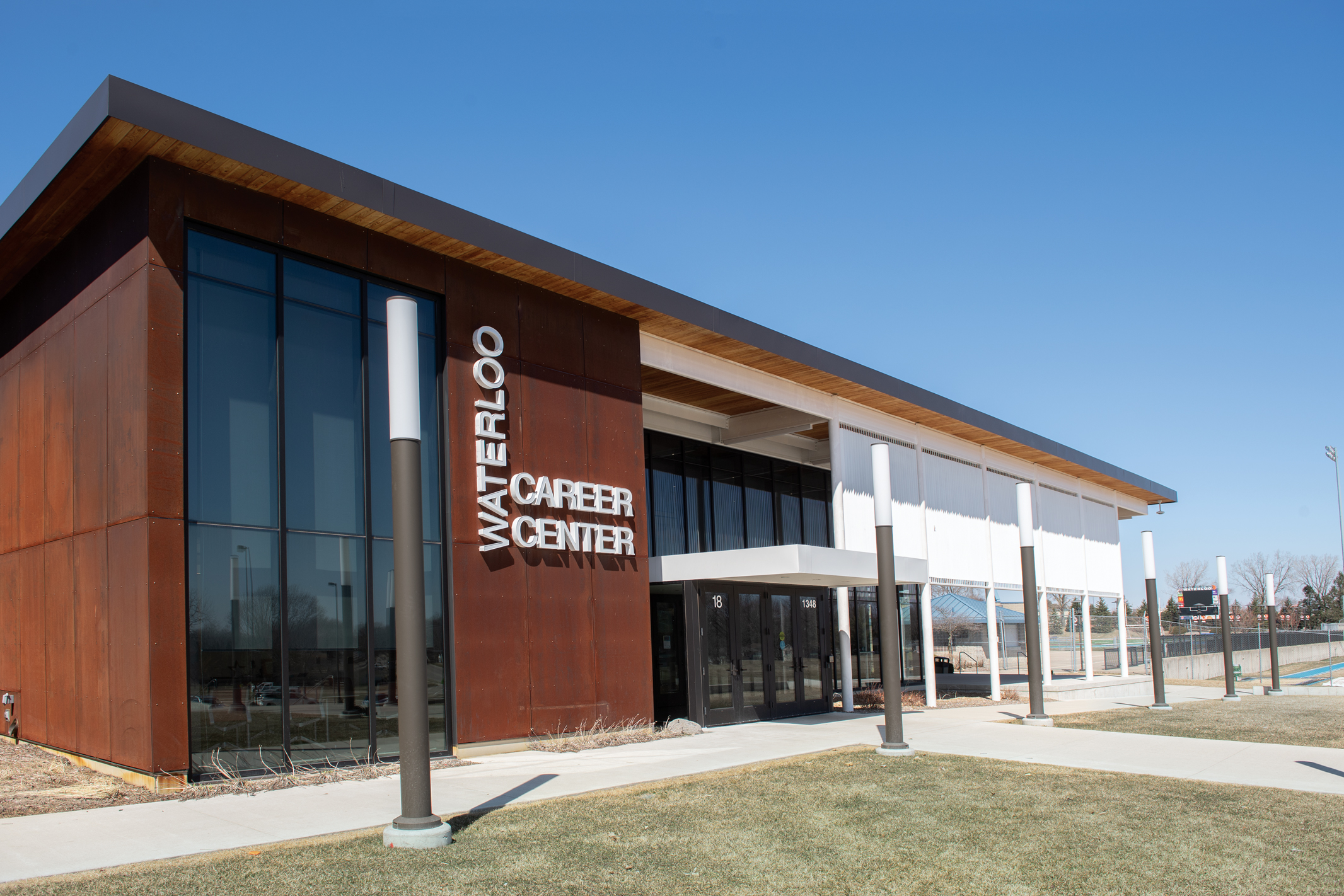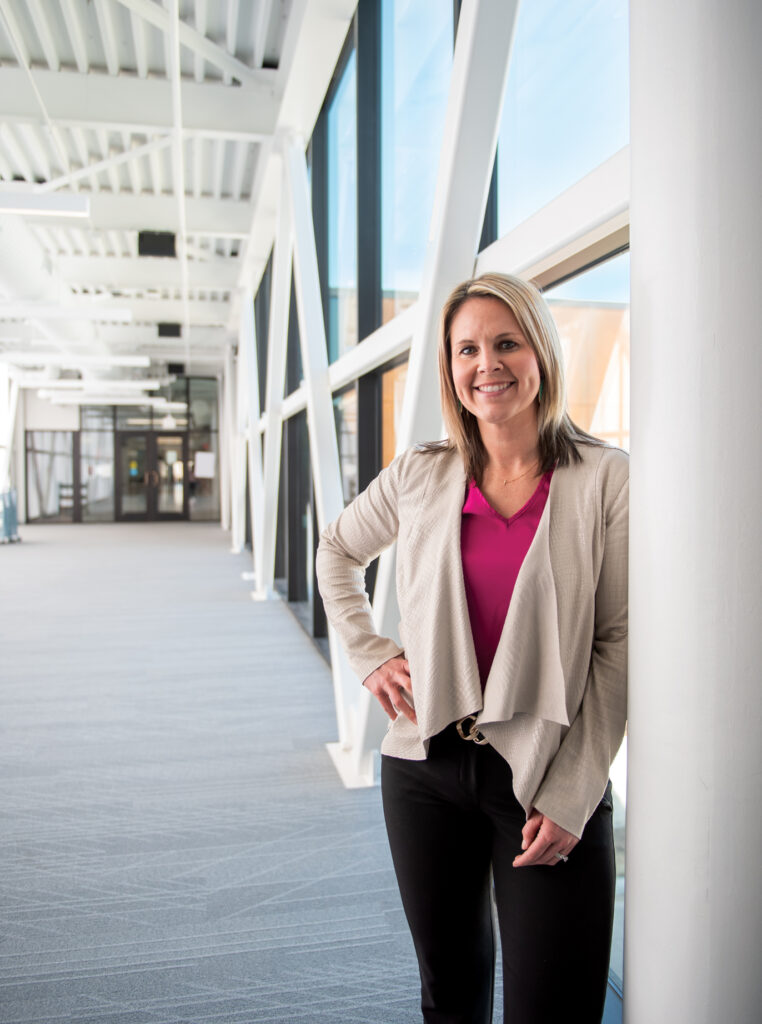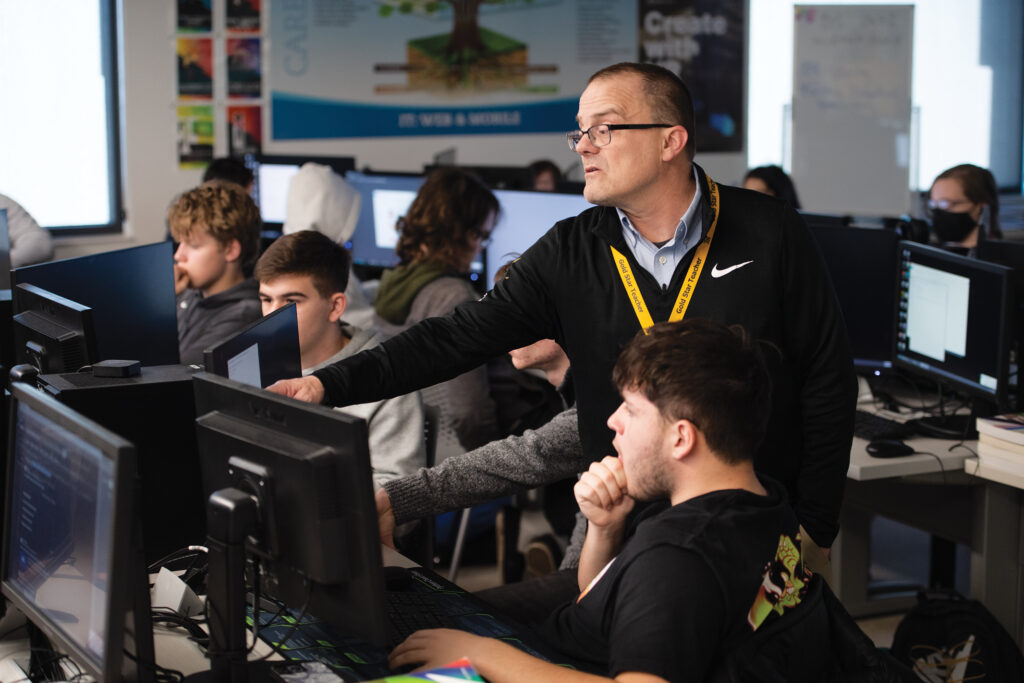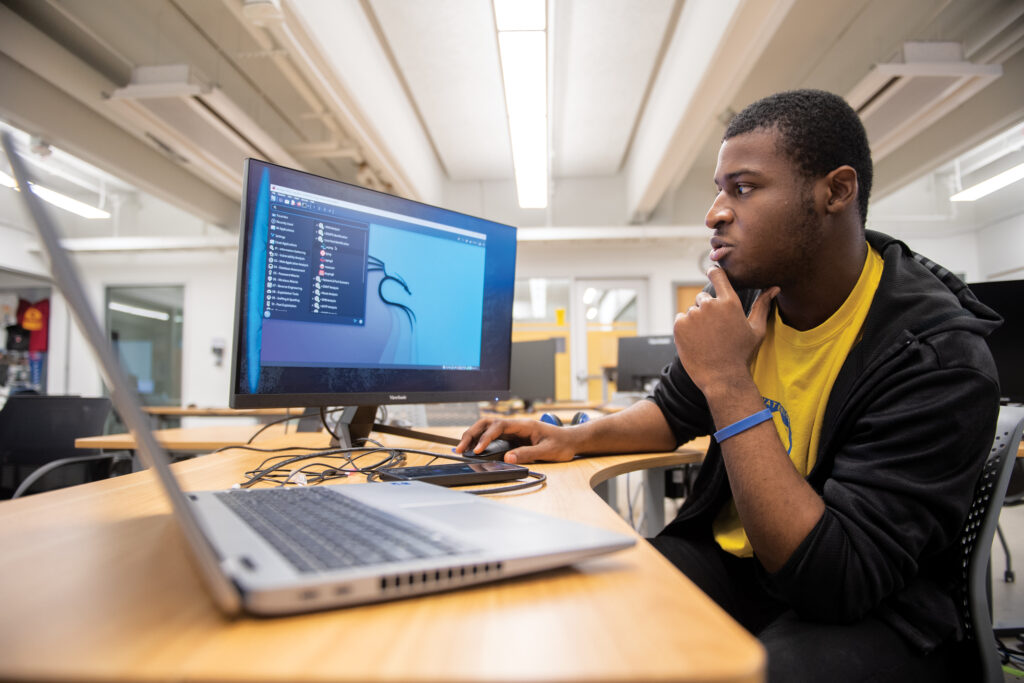Perhaps one of the biggest testaments to the approach at the Waterloo Career Center is that the adults who visit wish they would have had the same option when they were in school.
“I’d have done backflips to have that when I was in school,” said Bryan Tonne, vice president of IT operations at VGM Group, which partners with the career center.
Cary Darrah, CEO of Grow Cedar Valley, a regional economic development organization for northeastern Iowa, said members of the Cedar Valley Leadership Institute had the same feelings after visiting.
“They said, ‘I am just so mad I never ever had anything like this when I was growing up. I just so regret that there wasn’t something like this figured out,’” Darrah said.
Opened in 2017, the career center currently offers 18 work-based learning programs in in-demand fields like health care, IT and the trades. Accessibility is central, with the programs open to high school students from Waterloo’s public and private schools as well as eight surrounding school districts.
The practice of reserving clinical or on-the-job experiences for college is being traded in for efforts to help students find their footing sometimes long before high school graduation.
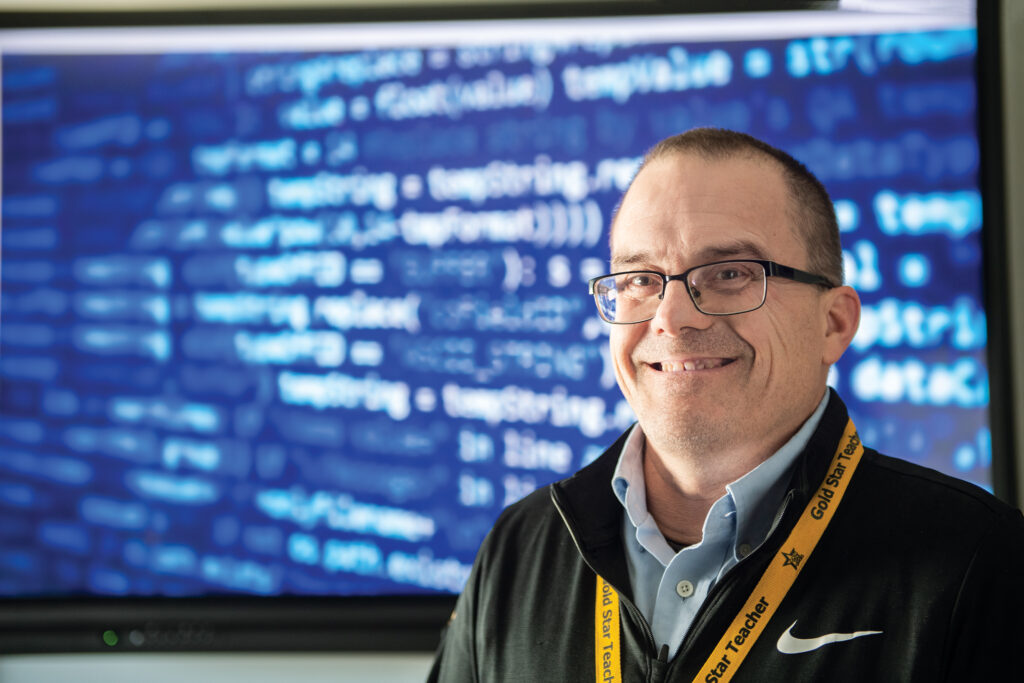
Compared with when he started working at the career center about five years ago, instructor Kyle Kuhlers said more and more students have identified career paths they’re interested in.
“Now, that may not end up [being] what they’re going to be, but they have an idea. They’ve had a chance to explore and go a little bit deeper into it,” Kuhlers said.
The Waterloo Career Center began as a solution to a problem that the school district initially took the lead on and ultimately developed into an initiative that rallies business partners and the community at large to support students’ futures in Iowa.
Turning a vision into reality
Creative thinking is a through line at the Waterloo Career Center from its history to its classrooms and administration.
Amy Miehe, now administrator of the Waterloo Career Center, was a teacher on the 2012 task force exploring how the Waterloo school district could address an all-time low graduation rate.
She and others traveled around the U.S. to observe different teaching models and ultimately landed on bringing career exploration programs, or career academies, to Waterloo.
The first two of the career center’s programs, pre-nursing and digital graphics, launched in the 2016-17 school year in a portion of Central Middle School. But the district needed a clearer plan of where to house the center long term.
A 2016 bond referendum to construct a new building south of the middle school failed, but the vote showed there was broad support from the community.
“Based on that feedback, I think that drove the superintendent [Jane Lindaman] to brainstorm and work with our school board on what was a potential possibility, knowing that our community did support the idea, just not that option,” Miehe said.
The answer was in Central Middle School. It had more than enough space for its students, so the north end of the building became the Waterloo Career Center. Income from a 1% sales tax benefiting local schools funded the remodel.
Had the bond referendum been approved, Miehe said the center would have been forced to grow too fast, with 30 programs launching at once.
“It was actually a blessing to be able to slowly learn and grow and build upon,” she said.
Enrollment has grown to around 600 students, and many of them take multiple classes, Miehe said. Almost all of the courses offer college as well as high school credit.
Grow Cedar Valley was one of the community partners involved with the career center early on to help develop the curriculum to meet the needs of area businesses.
“A lot of businesses don’t know what they’re going to need in 10 years but they know what they need in two years and they know what they need in four years, so it’s a real buildable, scalable concept,” Darrah said.
A $35 million expansion of the career center is underway, which will add 60,000 square feet, creating more space for the construction program, a new auto and diesel program and 11 other new offerings.
Darrah said Lindaman, who retired as Waterloo’s superintendent in 2022, was an example of the dedication and ingenuity that Miehe, teachers and the community continue to pour into the center.
She adopted the initiative from the previous superintendent when she joined the district in 2014 and followed through on the vision.
“The actual execution and implementation and the stick-to-itiveness to get it done was absolutely Jane Lindaman,” Darrah said.
‘The community essentially is the school’
At its core, the career center works to put more students into the community and bring more of the business community into classrooms, positioning Waterloo to attract new people and companies.
Kuhlers said it’s normal for people from the community to be in classrooms.
“The community essentially is the school, and [the career center] looks at it from that perspective,” he said.
The career center instructors are largely responsible for building one-on-one business partnerships. Kuhlers, who teaches web programming and cybersecurity courses, said they can use professional development time to meet with partners to discuss how to support their needs in the classroom.
He said a strong partnership is driven by commitment to the career center’s mission above all.
“To me, a partner is standing right there with you, answering questions, helping you along the way,” he said. “Sure, it might be giving you money for something, but it’s bigger than just financial.”
He has seen what these connections can accomplish when everyone is engaged in the partnership. Students can build their own relationships with the business that can help in their future or experience working on a team and take part in the company’s wins.
Tonne, of Waterloo-based VGM Group, first visited Kuhlers’ classroom to speak on a panel of local professionals. Kuhlers said after speaking to the class he stayed on the sidelines observing his managers doing an activity with a few students.
Kuhlers said Tonne came up to him afterward and said, “I want these two kids working for me.”
Developing this and other partnerships took time, but this one experience was all Tonne needed to see to know he wanted to support the career center “the most that we could here at VGM.”
He said hosting internships at VGM is also intended to help keep students in Iowa after college.
“The primary goal of all this is to educate the students about opportunities at VGM, but ultimately to keep that talent in Iowa, and if they would want to come back to work for VGM, they know what we’re all about,” he said.
The center’s reputation has grown as local companies recognize opportunities for them and the students.
“It’s been something that was originally more of an explanation of how we can benefit you, to now them coming to us wanting to partner because they’re seeing evidence of students being successful in their experience here in different jobs and internships,” Miehe said.
Still, she said there have been instances of “failed internships.” Then, it’s “crucial” for the career center staff and the business to talk and be open about possible changes moving forward.
“I think that transparency in that relationship is huge [in order] to drive the work,” she said.
Businesses looking to build or expand in new communities are also perking up at the sight of offerings like the career center. Noel Anderson, community planning and development director for the city of Waterloo, said education options appear to be an up-and-coming priority among the large development projects considering the Waterloo area.
“It seems like the businesses that are looking to come to cities, especially the larger ones, are asking more questions about education and quality of life,” Anderson said. “The career center is very encouraging to a lot of them when they start talking about that, because of course, you can imagine they’re also talking about, ‘Hey, if I come to Iowa, how am I going to draw 300 people to come work here?”
Darrah said it will be interesting to see what families are looking for in their children’s education, especially following the passage of a new law this year offering private school vouchers.
“Now that they have more options, what are they going to be looking for, what kinds of things are going to be on their radar?” she said. “For some it’s going to be athletics, for some it’s going to be technology, for some it might be none of the above.”
Exploring solutions to companies’ obstacles first led the career center to ideas they may not have thought of otherwise. Early on, some businesses said they couldn’t dedicate all the resources to train and pay interns, so the district sought out a grant from an outside foundation that has been used to pay students for the first 100 hours of their internships.
“It takes persistence, and it takes creativity. … It takes persistence in developing the relationship to know what those obstacles are and then being creative to try and find ways around them,” Kuhlers said.
Kuhlers said the center’s open-mindedness and flexibility contribute to building successful partnerships.
“My boss is always open to listen, and really never starts out with ‘no,’” he said. “So many times in education, the quick, easy answer is ‘no.’ My boss is exactly the opposite — nothing is the same today as it was yesterday, because it’s always, ‘Well, let’s explore it.’”
